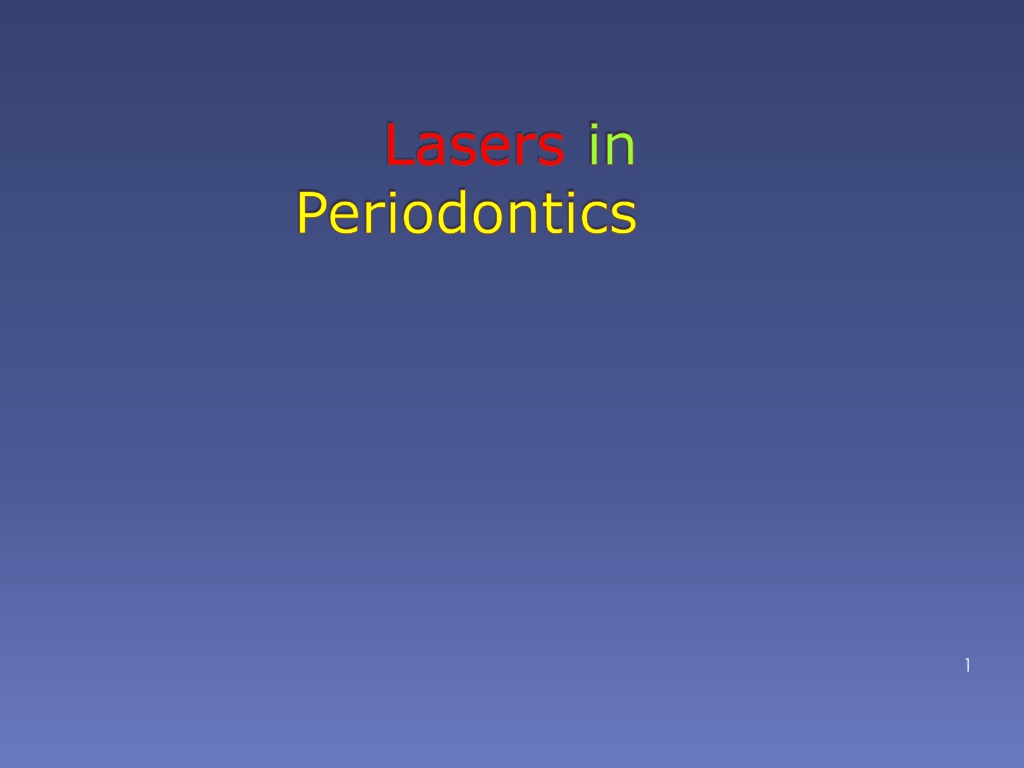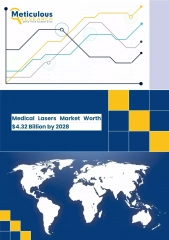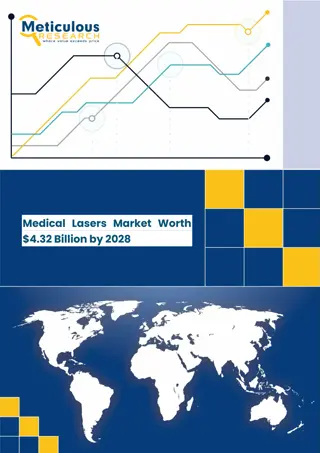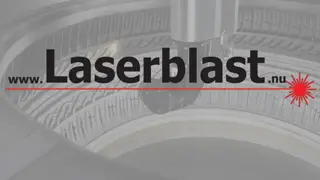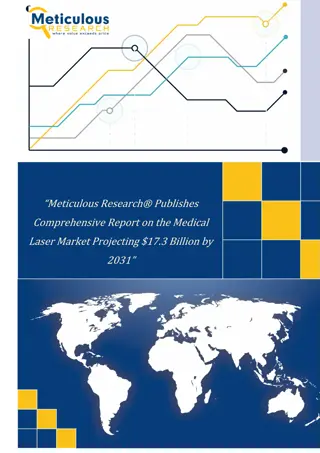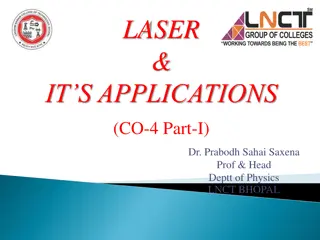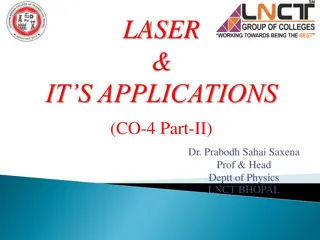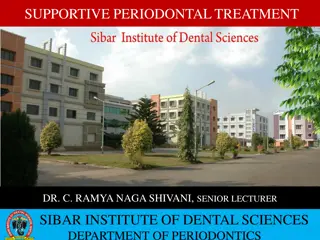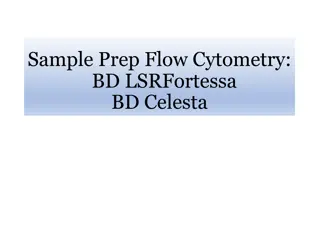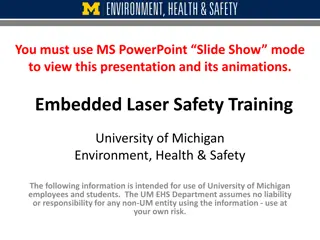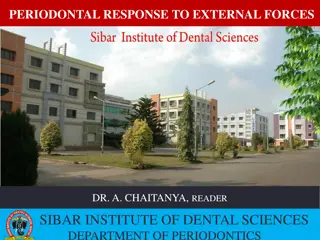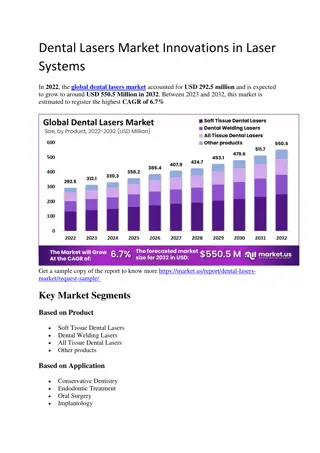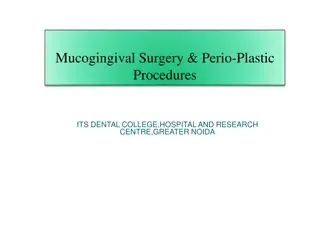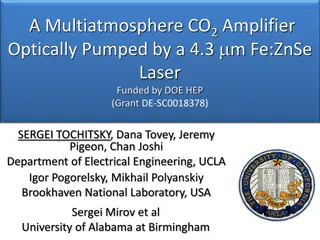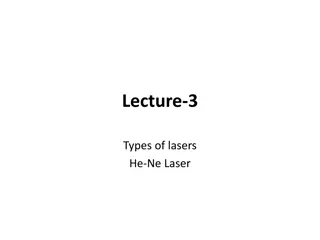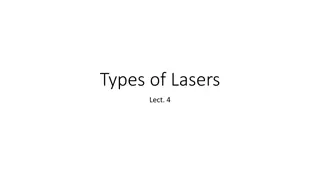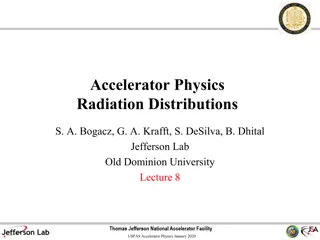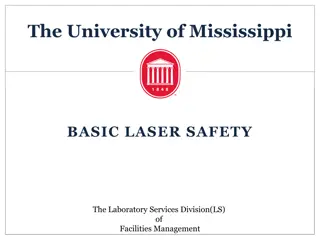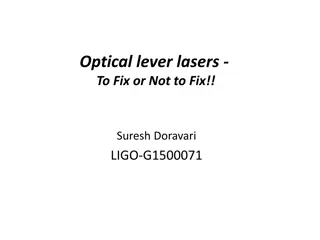Understanding Lasers in Periodontics: A Comprehensive Overview
Lasers play a significant role in periodontics, offering precise treatment with minimal discomfort. The technology involves light amplification, stimulation of photons, emission processes, and properties of laser light. Classification of lasers based on active medium types is explored, along with specific types utilized in dentistry such as Argon, Diode, and Neodymium:YAG. Each laser type has unique wavelength properties and clinical applications in oral healthcare.
Uploaded on Sep 11, 2024 | 0 Views
Download Presentation

Please find below an Image/Link to download the presentation.
The content on the website is provided AS IS for your information and personal use only. It may not be sold, licensed, or shared on other websites without obtaining consent from the author. Download presentation by click this link. If you encounter any issues during the download, it is possible that the publisher has removed the file from their server.
E N D
Presentation Transcript
Lasers in Periodontics 1
LASER L Light A Amplification S Stimulated E Emission of R Radiation 2
Electromagnetic energy that behave as a particle and a wave as well 3
AMPLIFICATION The initial light is amplified to make a very bright compact beam 4
STIMULATED Photons are amplified by stimulating an atom to release more photons. 5
EMISSION The excited atom emits a photon when another photon comes by. Einstein(1917) Stimulated Emission. 6
RADIATION For lasers, radiation refers to the PHOTONS which are being emitted. 7
Properties of LASER light Monochromatic (single wavelength) Collimation ( specific boundary) Coherency (in same phase) Efficiency (how good it works) Directional (narrow cone of divergence) 8
CLASSIFICATION OF LASERS Active medium used Contact and Non contact Oscillation mode Modes of delivery Based on the application Based on the output energy 9
Based on Active Medium Solid State Nd:YAG,Er:YAG,Er,Cr:YSGG,KTP Gas HeNe,Argon,Co2 Diodes GaAlAs Excimer F2,ArF,KrCl,XeCl 10
LASERS USED IN DENTISTRY 1. Argon: Produces blue light at 488nm and bluegreen light at 514nm Better Hemostasis Useful for Caries detection
2.Diode:800-980nm Excellent soft tissue surgical laser Smaller size and portable instrument
3.Neodynium:YAG ND:YAG 1064nm Hemostasis,apthous ulcers,pulpal analgesia,vapourising carious lesion
4. CARBONDIOXIDE:10600nm Cut and coagulate soft tissues vapourising dense fibrous tissue
5.Holmium-YAG 2100nm Arthroscopic surgery in TMJ. 6.Erbium family YSGG{2780nm} Erbium,YAG{2940nm} Resto-dentistry:RCT and Bone removal
Laser delivery system Contact lasers It works on the hot tip principal It improves cutting efficiency for low-power instruments Requires cleaning or cleaving the fiber to attain desired results Non contact lasers Noncontact surgery relies completely on the pigments and water present in the tissue. Noncontact surgery requires significantly greater power settings than contact surgery. 16
Oscillation Mode Emission of energy in 3 modalities Continuous wave : Beam emitted at only one power level for as long as device is operated by pressing the foot switch Gated pulse Mode: Periodic attenuations of laser energy being on & off similar to blinking light. The duration is as small as a few milli sec Free running pulsed mode: large peak energies are emitted for an extremely short time span followed by long time of which laser is off. It is computer controlled. 17
Modes of Laser delivery Articulated arm delivery Fibreoptic delivery system Hollow wave guide delivery system Air cooled fiber optic system 19
Laser application in vivacity of dentistry Gingival and periodontal surgeries Biopsies Tongue lesions Removal of granulation tissues Aphthous ulcers Herpetic lesions TMJ disorders Tuberosity reduction Coagulation and hemostasis Exposure of implants Scaling and root planing 22
Periodontal pocket treatment Nd:YAG -Gold & Vilardi 1994 Radvar et al. 1996-No thermal damage of root surface, but no clinical or microbiological improvement after laser treatment compared to SRP Liu et al. Laser was less effective in reduction of crevicular IL-1 than traditional SRP (RCT in a split-mouth design 23
Indications for laser periodontal treatment Persistence of disease after initial treatment Gingival bleeding in localized areas Pocketing of 4-6 mm present Patients otherwise forgo to periodontal treatment
Recent advancement Waterlase MD (All-Tissue Laser) 1. Works on teeth, gums and bone 2. FDA cleared for most clinical procedures of any dental laser 3. Cuts over 50% faster 4. Recent root canal clearance 5. Works on Hydrophotonics principle 1. It s the interaction between laser energy and water 2. Most procedures can be performed without anesthesia 3. Can coagulate while cutting 4. Reduced healing time and tissue trauma 25
LOW LEVEL LASER THERAPY Do Not cut or ablate the tissues Principle: Biostimulationor biomodulation effect Work in Milliwattage (400-900 nm) Walsh, Damante et al 2004. LLLT- Qadri in 2005. 26
Irradiation at specific wavelength Cellular behavior altered Mitochondrial level or on Ca+2 metabolism Increase in cell metabolism and proliferation 27
Dental Laser Safety 3 aspects to safety: Manufacturing process Proper operation of the device Personal protection 28
Regulatory Agencies American National Standard Institute (ANSI) Food and Drug Administration (FDA) Center for devices and Radiological Health (CDRH) Occupational safety health administration (OSHA) 29
